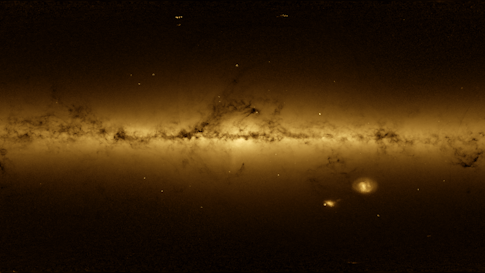Gaia Data Tackled in CCA’s First Sprint

Editor’s note: The sprint described below occurred in September 2016 and was featured in the Simons Foundation 2016 annual report.
On a dark night in the Southern Hemisphere, the Milky Way arcs across the blue-black sky. Off to one side are two hazy splotches of stars, the Small and Large Magellanic Clouds, two of the Milky Way’s nearest neighboring galaxies. When we gaze at these galaxies, it can be hard to imagine the intimate interactions they have had with each other, and with our own galaxy. But with data from the European Space Agency’s Gaia spacecraft, the Magellanic Clouds’ history with the Milky Way and the orbits of stars within our galaxy are becoming a bit clearer.
Launched into space in 2013, the Gaia probe was designed to measure the location and motion of stars within the Milky Way. By 2018, it will have collected data on about 1 billion stars, roughly 1 percent of stars in the galaxy. “This data will transform what we know about the physics of stars and the formation and evolution of the galaxy,” says David Hogg, an astronomer at New York University and a consultant at the Flatiron Institute.


